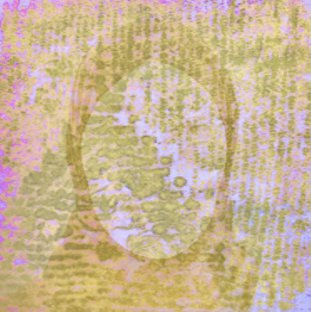
Soft Dividers and printed opacity for the construction of Muslim women’s self-identity: the Al Sadu tent divider, the veil and the materiality of privacy
This project explores the role that soft dividers, such as the Al Sadu tent divider and the veil, play in forming and constructing notions of privacy and self-identity for Muslim women. As a critical and material investigation, the project draws on my lived experience as a Saudi female artist who wears the veil in and outside Muslim countries and is conducted through practice-based research involving significant participatory work with female Muslim community groups in Saudi and Britain. Soft Dividers questions the degrees of visibility or shielding between religious and secular contexts to show how veiling and portable dividers aid the formation and representation of the self, enabling Muslim women as my participants to move within their own comfort zones across cultures.
My project begins with an investigation of the Al Sadu tent divider: as a form of weaving it is a deep-rooted Bedouin craft practiced mainly by women; as a woven cloth it separates private from public, and male from female zones in tented nomadic communities. My initial research into Al Sadu questions the relationship of this architectural fabric to the body and the Muslim woman’s veil, interrogating this through theories of ‘soft logic’ developed by Pennina Barnett and Gilles Deleuze. Adjusting my thinking, dialogues and art practice through an unjudgmental haptic collaboration with a varied group of Muslim women leads to a greater understanding of how privacy between the sexes is situated in the Arab social and cultural context, as discussed by Fadwa El Guindi and Fatema Mernissi.
In socio-political debate, my research explores interpretations of veiling as a soft divider and its implications of privacy. Soft Dividers offers an original contribution to the understanding of the intersectionality between embodied material encounters challenging conventional notions of Muslim women's subjectivity, and how this translates into the West for the modern, veiled Muslim woman as an intercultural dialogue.
Key details
School, Centre or Area
Supervisors
More about Rana
Biography
Rana Al-Ogayyel is a fine artist and lecturer in visual arts at the College of Art and Design, Princess Nourah Bint Abdulrahman University, K.S.A. She has been a practicing artist since 2004 and has extensive experience in fine arts and arts education. Her recent research explores concepts of privacy using woven and printed multi-layered materials in public domains. Through traditional Bedouin tent dividers – as a cultural practice, and the veil – as religious practice, she investigates ideas of divider in relation to Muslim women’s identity using a process of practice-based research and collaboration.
Degrees
PhD Fine art, Royal College of Art, 2018- present
MRes Fine art, Royal College of Art, 2017
MA Art Education, King Saud University, Saudi Arabia, 2010
BA Art Education, Princess Nourah Bint Abdulrahman University, Saudi Arabia, 2007
Experience
Lecturer, College of Atr and Design BA programme, Princess Nourah Bint Abdul Rahman University (PNU), Saudi Arabia, 2011-present
Teacher Assistant, College of Atr and Design BA programme, Princess Nourah Bint Abdul Rahman University, Saudi Arabia, 2014-2015
Funding
Princess Nourah Bint Abdulrahman University, Riyadh, Saudi Arabia
Exhibitions
(2021) RCA Research Biennale https://research-biennale.rca.ac.uk/
(2019) From Within. Ad-Diriyah (JAX), Ministry of Culture, Riyadh.
(2019) There's something lurking in the shadows that might be interesting. Dyson Gallery, RCA. London.
(2017) FLIGHT Mode. Assembly Point, London.
(2017) What can you find out in one year. Dyson Gallery, RCA. London.
(2010) Riyadh Governorate Fair at University of Princess Nourah Bint Abdul Rahman.
Participated in the 23rd Janadriya Exhibition.
Publications
Al Ogayyel, R and Oskay, C (2020). Al-Sadu Weaving: Significance and Circulation in the Arabian Gulf. In: I. Baird and H. Yağcıoğlu, ed., All Things Arabia Arabian Identity and Material Culture. Brill, pp. 143–162
Research outputs
(2019) Collaborations with Saudi Heritage Preservation Society to submit Al Sadu from to UNESCO to participate in the preservation of Al Sadu as a form of intangible heritage.